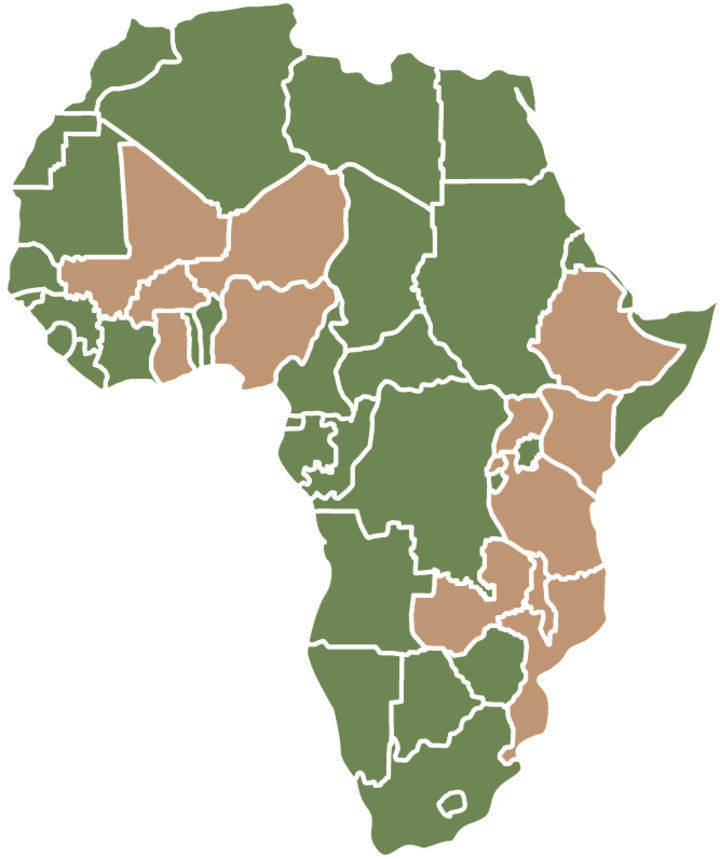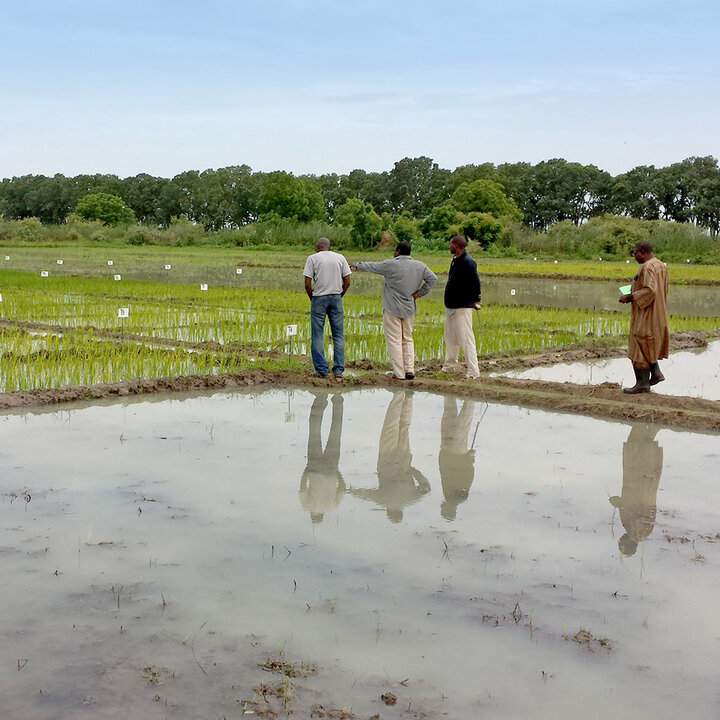OFRA Book Chapters
- OFRA Chapter 1 Principles and Approaches
- OFRA Chapter 2 Spatial Analysis
- OFRA Chapter 3 ISFM in Sub-Saharan Africa
- OFRA Chapter 4 Burkina Faso
- OFRA Chapter 5 Ethiopia
- OFRA Chapter 6 Ghana
- OFRA Chapter 7 Kenya
- OFRA Chapter 8 Mali
- OFRA Chapter 9 Malawi
- OFRA Chapter 10 Mozambique
- OFRA Chapter 11 Niger
- OFRA Chapter 12 Nigeria
- OFRA Chapter 13 Rwanda
- OFRA Chapter 14 Tanzania
- OFRA Chapter 15 Uganda
- OFRA Chapter 16 Zambia
- OFRA Chapter 17 Enabling Optimization
- OFRA Endmatter
- OFRA Frontmatter

Fig. 1: Africa graphic by Bryan Christie and Kai Krause, for Scientific American

Fig. 2: Map of Africa with the 13 participating Sub-Saharan countries in brown.
Optimized Fertilizer Recommendations in Africa enables farmers of Sub-Saharan Africa to maximize profit on fertilizer investment while increasing yield, maintaining or improving soil fertility, and protecting the environment. Typical world map projections tend to de-emphasize Africa’s size. The Christie and Krause map (Fig. 1) provides a sense of scale.
With scientific support from the University of Nebraska–Lincoln, the AGRA-SHP funded (CABI-Nairobi managed) OFRA project builds on work in Uganda and is servicing 67 prime agricultural ecozones (AEZs) in 13 Sub-Saharan countries (Fig. 2). See AEZ Maps.
Crop-nutrient response functions have been determined for the 67 AEZs using results of past and recent field research. Each AEZ’s fertilizer recommendations are developed from a data subset derived from research results from similar crop growing conditions as in a given AEZ (i.e. the AEZ’s inference space).*
The data subset is analyzed to determine representative response functions which are then entered into the AEZ’s Excel fertilizer optimization tool (FOT). The FOT then uses linear optimization to re-iteratively work across the numerous response functions to give fertilizer use recommendations in consideration of the farmer’s choice of crops and land allocation, fertilizer costs, grain values and the farmer’s budget constraint to fertilizer use.
Paper FOTs have been developed for each AEZ for use when computers are not available and these advise not only fertilizer product and rate but also on time and method of application. The paper FOTs also advise on farmer calibration of application to achieve a uniform application at the correct rate.
Extension training materials and fertilizer use calibration tools are available.
The OFRA Response Function Dataset contains 6,200 georeferenced crop nutrient response functions and supporting information.


